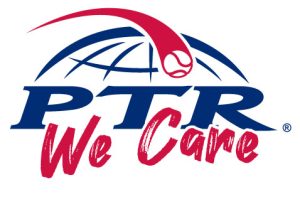I sensed that after my two-plus years as general manager of a thriving club in Minneapolis, my board and committee members were getting too involved in the day-to-day operations of the club. I scheduled a meeting with my club president and told Mr. Haik that I believed I was being micromanaged by well-meaning club volunteers.
I knew he was a strong supporter of mine and, more importantly, I also knew he believed club boards should focus on policy and strategy rather than operational issues. After I outlined my concerns, I was sure he would sympathize with me and use his influence to support me. Imagine my shock when he looked into my eyes and said, “Dick, if you believe you are being micromanaged, maybe it’s time you stepped up and became the general manager/COO we thought we were hiring a few years ago. You need to quit whining and begin to lead the employee team and the club members on the board and on the committees like a true club executive would.”
I felt like I had been hit alongside my head with a two-by-four. As I left Mr. Haik’s law office, I was too stunned to go back to the club, so I went home to carefully process what he told me. As I reflected on his comments, I knew deep down he was right. I scheduled a meeting with one of our board members, who happened to have a successful consulting practice coaching corporate executives to become better leaders.
I spent an entire day with Mr. Stanton. He helped me develop a multi-phased program for how I could demonstrate more leadership in every area of my club responsibilities. I will share a few of the strategies we discussed that resulted in my metamorphosis from club manager to club leader.
Mr. Stanton told me that I needed to control the written record of the club by taking the minutes at every committee meeting and every board meeting. As he told me, “Your success at the club will not be written by a volunteer. You need to write the story.” Our club secretary welcomed my notes after each board meeting, and soon he relied on me to edit his minutes and combine them with mine before they went to the board. No matter what issue or decision appeared in the minutes, I was able to ensure there was a positive presentation.
Another key strategy Mr. Stanton shared was to “understand and know the club’s monthly financial operating statement and balance sheet better than any board member.” Since I was an English and history major in college, I had never taken an accounting class and could barely balance my checkbook. That would change dramatically.
I reached out to one of our club members, a retired CPA, and he happily agreed to coach me on how to read the numbers until I understood them better than our club auditors. In fact, at the end of the year, our club treasurer told the board “that while the annual audit report was very good, if they wanted a clear understanding of our club’s financial condition, they should pay more attention to the report Kopplin wrote about the audit report.”
Maybe one of the best practices Mr. Stanton shared with me was to get to know and understand my board members so that I could benefit from their expertise. He suggested I make an appointment to visit each board member at their office, or if they were retired, at their home. I did so with each of the nine members; while the meetings created a positive result, there was one meeting that was truly impactful in turning what had been a strained relationship into a positive partnership going forward.
Mr. Olson, our vice president, was in line to be president in less than a year. The few conversations we had always seemed abrupt and almost adversarial, and I could never understand why. While I visited him at his office, he seemed to warm up after I noticed his Notre Dame diploma on the wall. My brother-in-law graduated from Notre Dame, so I commented on the great football program. That allowed us to engage in one of the better conversations we had ever had. Additionally, Mr. Olson toured me around his printing plant and introduced me to many of his employees. Our communications dramatically improved and a year later, Mr. Olson became one of the best club presidents I ever worked with.
I will always be grateful for the “wake-up call” Mr. Haik gave me, and I appreciate the wonderful advice and coaching Mr. Stanton provided. I learned that if you have the title of general manager/COO, you also have to step up and act the part.
This much I know for sure.








